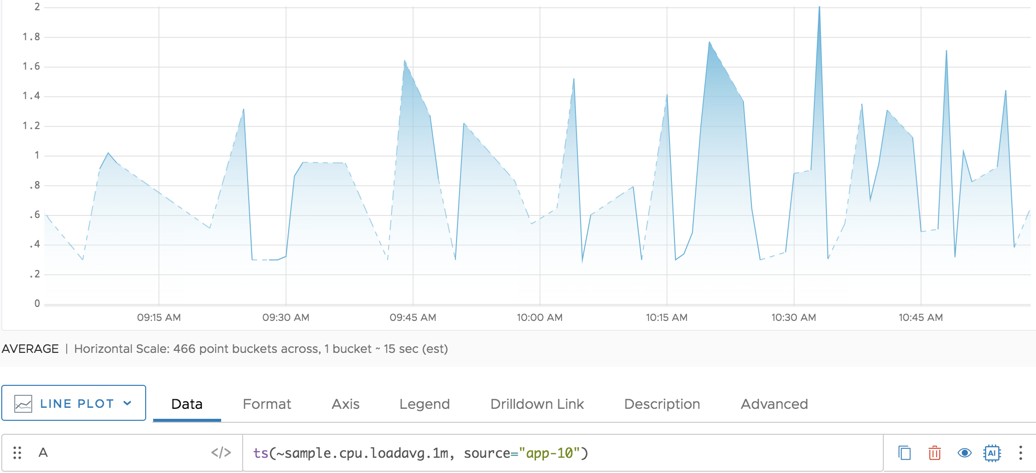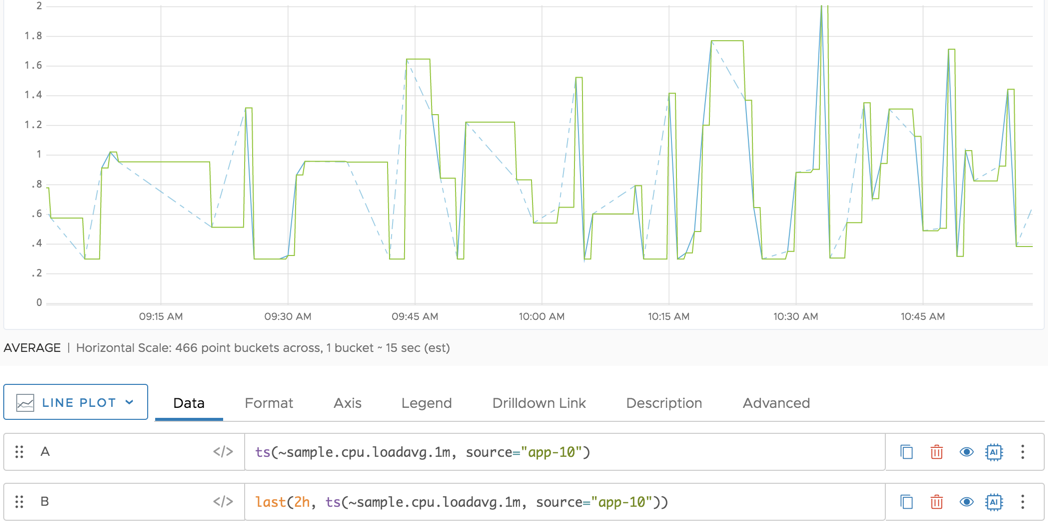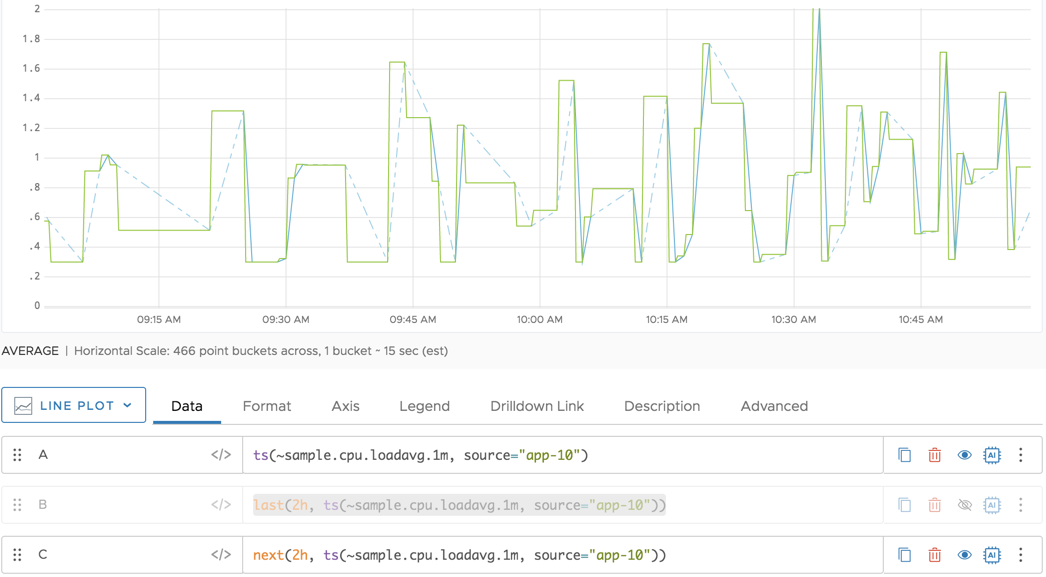Summary
last([<timeWindow>,] <tsExpression>)
Fills in gaps in each time series described by tsExpression, by inserting data points that have the last known value of the time series.
- If you don’t specify
timeWindow, fills gaps with duration of up to the metrics obsolescence period are completely filled. (depending on when data started flowing) with the last known value. - If you specify
timeWindow, fills any gap you specify with the last know value.
See Caveats below for some limitations to this function.
Parameters
| Parameter | Description |
|---|---|
| timeWindow | Maximum amount of time to fill with inserted data points. If you omit this parameter, gaps with duration of up to the metrics obsolescence period are completely filled.
You can specify a time measurement based on the clock or calendar (1s, 1m, 1h, 1d, 1w), the window length (1vw) of the chart, or the bucket size (1bw) of the chart. Default is minutes if the unit is not specified. |
| tsExpression | Expression that describes the time series in which to replace data gaps with the last value. |
Description
The last() function allows you to assign the last known reported data point value to a gap of missing data. When you add last() to a tsExpression, a solid straight line with the value of the last reported data point will be drawn in place of gaps of missing data.
By default, last() applies the last reported data value to gaps of missing data with duration of up to the metrics obsolescence period. If you’d like this window to be smaller, you can use the timeWindow parameter. If you use last() with a function that uses interpolation, we apply last() to the last 15% of a chart window.
Examples
In the following example, we’ve zoomed in on ~sample.cpu.loadavg.1m and see missing data.

We decide to replace the missing data with the last value before the gap. What that is differs for different missing data windows.

Then we replace the missing data with the first good value after the gap using next.

Caveats
The function returns results only if:
- the specified timeWindow is less than the metrics obsolescence period
- the time window the function looks at is less than the metrics obsolescence period
For example, if you specify last(1vw, ts(my_query), and if your view window is greater than 4w (the metrics obsolescence period if the default configuration is not changed), the query fails with an error.
last() to a histogram. Even if you convert the histogram to a tsExpression, an error results if you then apply last().See Also
Using Moving and Tumbling Windows to Highlight trends
Other missing data functions include